#eCommerce Web Scraper
Explore tagged Tumblr posts
Text
eCommerce data scraping extracts product details, prices, reviews, and inventory data from eCommerce platforms to gain actionable insights. This powerful tool supports price monitoring, market research, and competitor analysis, enabling businesses to optimize strategies and boost growth effectively.
#eCommerce Data Scraping#Sentiment Analysis#Web Scraping Services#Scraping eCommerce Websites#eCommerce Web Scraper
0 notes
Text
Amazon Product Scraper: Unveiling the Power to Extract Reviews, Prices, and ASINs
Unlock the potential of Amazon Product Scraper - Extract product reviews, prices, and ASINs effortlessly. Empower your business with valuable data insights from the world's largest marketplace.
#Amazon Product Scraper#Scrape Amazon Reviews#Scrape Amazon Prices#Scrape Amazon ASINs#ECommerce Web Scraper#eCommerce Scraping Services
0 notes
Text
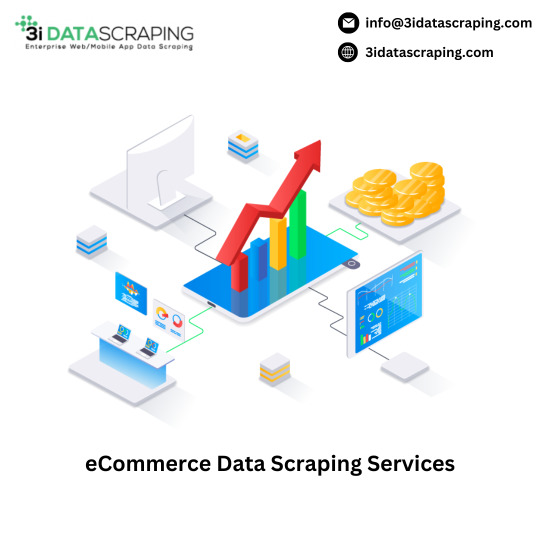
eCommerce Data Scraping Services extract valuable information from online stores to help businesses analyze competitor prices, product details, reviews, stock levels, and promotions. These services automate data collection using advanced tools, ensuring up-to-date, accurate data. They support decision-making in pricing, inventory management, and market strategy, while adhering to legal and ethical standards.
#eCommerce Data Scraping Services#ecommerce scraping services#scrape data from ecommerce#ecommerce scraper#ecommerce data scraping#ecommerce web scraping
0 notes
Text
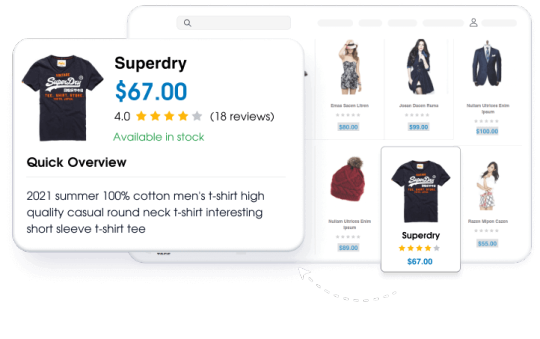
E-commerce data scraping provides detailed information on market dynamics, prevailing patterns, pricing data, competitors’ practices, and challenges.
Scrape E-commerce data such as products, pricing, deals and offers, customer reviews, ratings, text, links, seller details, images, and more. Avail of the E-commerce data from any dynamic website and get an edge in the competitive market. Boost Your Business Growth, increase revenue, and improve your efficiency with Lensnure's custom e-commerce web scraping services.
We have a team of highly qualified and experienced professionals in web data scraping.
#web scraping services#data extraction#ecommerce data extraction#ecommerce web scraping#retail data scraping#scrape#retail store location data#Lensnure Solutions#web scraper#big data
1 note
·
View note
Text
Unlocking the Power of eCommerce Scraping Services: A Deep Dive into Web Scraping Retail Data
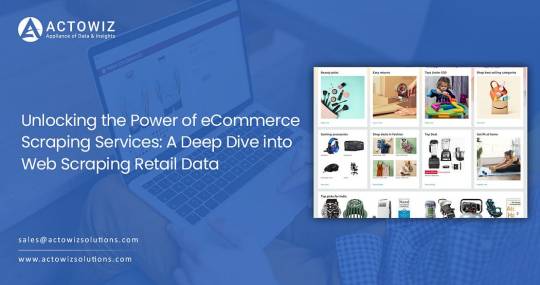
In the dynamic world of eCommerce, data is king. To gain a competitive edge, businesses need access to up-to-date and relevant information about products, prices, customer reviews, and market trends. This is where eCommerce scraping services come into play.
In this blog, we will explore the fascinating world of eCommerce data scraping and how it can revolutionize your business.
What is eCommerce Data Scraping?
eCommerce data scraping, also known as web scraping retail data, is the process of extracting information from various eCommerce websites automatically. This data can include product details, pricing information, customer reviews, stock availability, and more. The scraped data is then structured and organized for analysis, helping businesses make informed decisions.
The Benefits of eCommerce Data Scraping:
Competitive Intelligence: eCommerce scraping services allow businesses to monitor competitors’ prices, product offerings, and customer reviews in real-time. This helps in adjusting your strategies to stay ahead in the market.
Price Optimization: With access to pricing data from multiple sources, businesses can optimize their pricing strategies to attract more customers while maintaining healthy profit margins.
Product Catalog Expansion: Web scraping eCommerce data enables businesses to rapidly expand their product catalog by adding new products from different websites without manual data entry.
Customer Insights: Analyzing customer reviews and feedback from eCommerce websites can provide valuable insights into customer preferences and pain points, helping improve products and services.
Inventory Management: eCommerce data scraping can also help in monitoring stock availability, ensuring you never run out of popular products.
Challenges of eCommerce Scraping:
While eCommerce data scraping offers numerous advantages, it also comes with some challenges:
Website Structure Changes: eCommerce websites frequently update their designs and structures, which can break scraping scripts. Regular maintenance is required to adapt to these changes.
Legal and Ethical Considerations: Scraping data from websites without permission may infringe on copyright and terms of service. It’s essential to be aware of and comply with legal and ethical guidelines.
Data Quality: Ensuring the accuracy and quality of scraped data can be challenging, as it often requires data cleaning and validation processes.
Choosing the Right eCommerce Scraping Service:
When selecting an eCommerce scraping service, consider the following factors:
Data Quality: Look for a service that provides high-quality and accurate data.
Scalability: Ensure the service can handle your data volume requirements.
Compliance: Verify that the service complies with legal and ethical standards.
Customization: Choose a service that allows customization to meet your specific data needs.
Conclusion: eCommerce scraping services are powerful tools for businesses seeking a competitive advantage in the online marketplace. They provide access to valuable data that can inform pricing strategies, product offerings, and customer engagement. However, it’s essential to use these services responsibly, respecting legal and ethical boundaries. When used effectively, eCommerce data scraping can transform your business and drive growth in an increasingly competitive eCommerce landscape.
#Ecommerce scraping services#Ecommerce Data Scraper#Web Scraping Retail Data#Scrape Ecommerce Data#Retail Scraper
0 notes
Text
Scrape E-Commerce product prices data for EMEA & APAC regions.
Learn how businesses in EMEA and APAC regions use scrape e-commerce product price data to drive growth. Check out our blog for details.
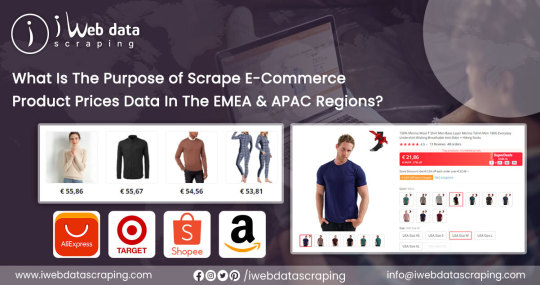
#Price scraping tools#scrape product Prices from any eCommerce website#ecommerce web prices data collection services#Scrape product Price Data#eCommerce Price Scraper
0 notes
Link

The market competition is rising. Most e-commerce brands struggle to stay afloat. They struggle to beat the cutthroat competition. As a result, businesses are looking for innovative ways. They want to stand out and strengthen their market presence. As a result, web scraping can be a great solution. Thanks to its real-time and automated data extraction process. This is useful to boost your organization’s growth and ROI.
0 notes
Text
E-commerce Web Scraping | Data Scraping for eCommerce
Are you in need of data scraping for eCommerce industry? Get expert E-commerce web scraping services to extract real-time data. Flat 20%* off on ecommerce data scraping.
0 notes
Text
#web scraping#businessgrowth#leadgeneration#marketingtools#web development#technology#python#linkedintips#dataautomation#data scraping
0 notes
Text
eCommerce Data Scraping - eCommerce Scraper - Scraping eCommerce Websites
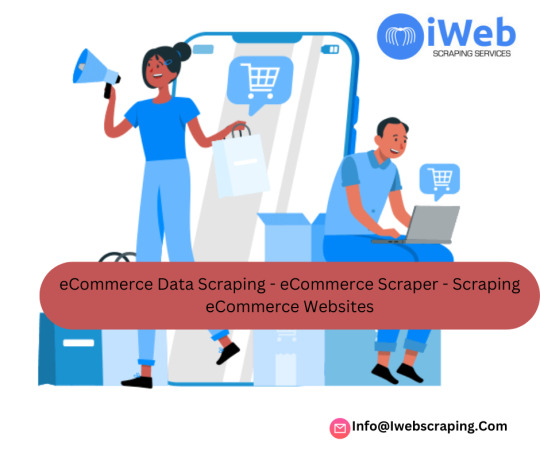
In the digital era, data is the new oil. For eCommerce businesses, the ability to harness and analyze data effectively can be a game-changer. This is where eCommerce data scraping comes into play. Whether you're looking to track competitors, optimize pricing strategies, or understand customer behavior, scraping data from eCommerce websites can provide invaluable insights. Let's dive into what eCommerce scraping is, how it works, and its myriad benefits.
What is eCommerce Data Scraping?
eCommerce data scraping involves extracting vast amounts of data from eCommerce websites. This process can include gathering product information, pricing, customer reviews, and more. The goal is to collect this data in a structured format for analysis, helping businesses make informed decisions.
Key Elements Scraped from eCommerce Websites
Product Details: Titles, descriptions, specifications, and images.
Pricing Information: Regular, discounted prices, and historical pricing trends.
Inventory Status: Availability and stock levels.
Customer Reviews: Ratings, feedback, and sentiment analysis.
Seller Information: Details about the sellers and their offerings.
How eCommerce Scraping Works
At its core, eCommerce scraping involves using automated bots, known as scrapers, to navigate and extract data from websites. Here’s a step-by-step overview of the process:
Identify the Target: Select the websites or pages you want to scrape.
Develop the Scraper: Create a bot using programming languages like Python with libraries such as BeautifulSoup or Scrapy.
Data Extraction: The bot sends requests to the target website and extracts the required data.
Data Cleaning and Storage: Clean the extracted data to remove duplicates or errors, then store it in a structured format like CSV or a database.
Data Analysis: Analyze the data using various tools and techniques to derive actionable insights.
Tools and Technologies for eCommerce Scraping
BeautifulSoup: A Python library for parsing HTML and XML documents. Ideal for smaller projects.
Scrapy: An open-source web crawling framework for more extensive scraping projects.
Selenium: Useful for scraping websites with dynamic content generated by JavaScript.
Octoparse: A no-code, user-friendly tool for non-programmers.
Benefits of eCommerce Data Scraping
1. Competitive Intelligence
By continuously monitoring your competitors, you can stay ahead of market trends. Scraping competitor websites helps in understanding their pricing strategies, new product launches, and promotional activities. This information can be crucial for making strategic business decisions.
2. Price Optimization
Dynamic pricing is a common strategy in eCommerce. By scraping pricing data from various sources, businesses can adjust their prices in real-time to remain competitive. This not only maximizes profits but also ensures customer satisfaction.
3. Market Research
eCommerce scraping can provide deep insights into market trends and consumer preferences. Analyzing customer reviews and feedback helps businesses understand what products are popular and why, guiding product development and marketing strategies.
4. Inventory Management
Keeping track of inventory levels across different platforms can be challenging. Scraping can automate this process, providing real-time updates on stock availability. This is particularly useful for businesses operating on multiple eCommerce platforms.
5. Data-Driven Marketing
Understanding customer behavior is key to effective marketing. By analyzing data from reviews and social media, businesses can tailor their marketing efforts to target specific demographics and enhance customer engagement.
Ethical Considerations and Legal Implications
While eCommerce scraping offers numerous benefits, it’s crucial to approach it ethically and legally. Unauthorized scraping can lead to legal issues and damage relationships with other businesses. Here are some best practices to consider:
Respect Robots.txt: Always check the website’s robots.txt file, which indicates which parts of the site can be scraped.
Rate Limiting: Avoid overloading websites with too many requests in a short period.
Data Privacy: Ensure that the data you collect does not infringe on user privacy or violate any laws.
Future Trends in eCommerce Data Scraping
As technology evolves, so do the methods and tools for data scraping. Artificial intelligence and machine learning are set to revolutionize how data is collected and analyzed. Expect to see more sophisticated scraping bots that can handle complex tasks and provide deeper insights.
1 note
·
View note
Text
What Are The Steps To Effectively Scrape Customer Reviews From ECommerce Sites
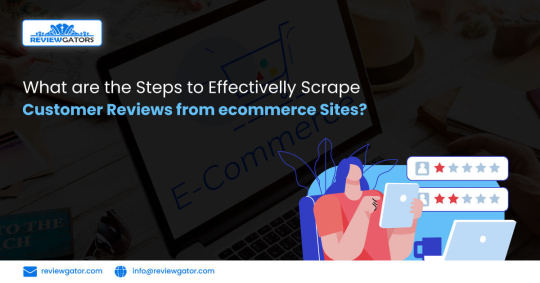
Businesses of all sizes want new ways to grow. One popular strategy is scraping customer reviews. This process of eCommerce review scraping lets businesses learn valuable insights about what customers think of their products or services. Scraped data can also improve marketing and create better business plans. While scraping reviews may seem difficult at first, it can be a helpful tool for boosting a business's profits.
Many factors influence customers' purchasing decisions. When people decide to buy something, they often look at ratings and read what other customers have said. In fact, almost all customers, about 95%, read product reviews before buying. However, businesses struggle to collect many customer reviews from various websites. Web scraping allows businesses to monitor and gather customer reviews from social media and websites.
What is Product Review Scraping?
Product review scraping refers to the process of extracting and collecting reviews and associated data from e-commerce websites and other online platforms. This data typically includes such as customer ratings, written reviews, product details, reviewer demographics, and timestamps. It involves using special software to automatically collect reviews and feedback from websites like online stores, social media, forums, and review sites.
The reviews are then analyzed to get insights into customer thoughts and feelings towards specific products or brands. This customer feedback data allows companies to gauge product popularity, identify improvement areas, and make more informed choices when creating new products, planning marketing campaigns, and enhancing customer service offerings. Companies find value in understanding customer opinions gathered from online reviews by using review scraper APIs. Businesses scrape product reviews to enhance their products and services based on user feedback and sentiments.
Steps to Scrape Product and Customer Reviews from eCommerce Sites
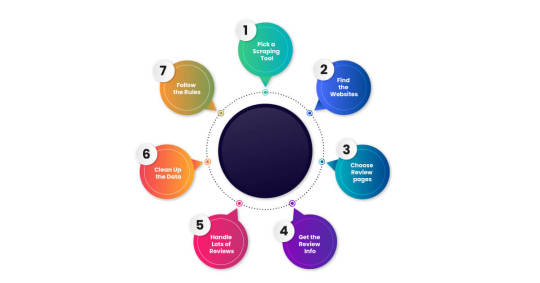
Businesses can scrape product reviews from eCommerce websites by following a specific procedure that helps ensure a smooth scraping process by using review scraper APIs.
Pick a Scraping Tool
Web scraping tools are like specialized software and review scraper APIs that help you extract data from websites. It includes popular tools, including BeautifulSoup, Scrapy, and Selenium. When choosing a tool, consider factors like ease of use, scalability (how well it handles large amounts of data), and customization options. Some tools are more accessible for beginners, while others offer more advanced features for complex scraping tasks.
Find the Websites
Decide which e-commerce websites you want to scrape reviews from. Review the website's terms of service and robots.txt file to ensure that scraping is allowed. Ensure you're not violating any rules or policies by scraping the website's data without permission.
Choose Review Pages
Once you've identified the e-commerce sites, navigate to the specific pages where product reviews are located. These pages could be product detail pages or dedicated review sections where customers leave their feedback. Grab the URLs of these pages so your scraping tool knows where to look for reviews.
Get the Review Info
Use your chosen scraping tool and review scraper APIs to extract relevant information from the review pages. This information typically includes the text of the reviews, star ratings given by customers, details about the reviewers (such as usernames or demographics), and timestamps indicating when the reviews were posted. Pay close attention to the structure of the website's HTML code to locate and extract the desired elements accurately.
Handle Lots of Reviews
Many e-commerce sites paginate their review sections, which means that reviews are spread across multiple pages. Implement logic in your scraping script to navigate through these pages and collect reviews from each page. It is crucial to make sure that your scraping tool can handle pagination and retrieve all reviews, even if they're spread across multiple pages.
Clean Up the Data
Once you've scraped the reviews, the data may contain noise or inconsistencies that need to be cleaned up. This involves removing unnecessary HTML tags, standardizing formats (such as converting dates to a uniform format), and handling missing values. Cleaning up the data makes it easier to analyze and extract meaningful insights.
Follow the Rules
Adhere to the website's policies and guidelines while scraping data. Avoid aggressive scraping techniques that may overload servers or violate terms of service. Scrape at a reasonable rate to respect the website's bandwidth and server resources. Always be respectful and ethical in your scraping practices to maintain a positive relationship with the website and avoid any legal issues.
Continue reading https://www.reviewgators.com/scrape-customer-reviews-from-ecommerce-sites.php
#review scraping#eCommerce review scraping#Product Review Scraping#Scrape Customer Reviews From ECommerce Sites#Scrape Customer Reviews
1 note
·
View note
Text
Amazon Product Scraper: Unveiling the Power to Extract Reviews, Prices, and ASINs
Amazon is the giant among giants in the vast digital landscape of e-commerce. With millions of products on its platform, navigating this vast marketplace can be daunting. For businesses, researchers, and enthusiasts alike, accessing product data from Amazon is crucial for understanding market trends, analyzing consumer behavior, and making informed decisions. That's where an Amazon Product Scraper comes into play, empowering users to extract valuable information like product reviews, prices, and ASINs (Amazon Standard Identification Numbers) to unlock insights and opportunities.
What is an Amazon Product Scraper?
An Amazon Product Scraper is a web scraping tool designed to automatically collect data from Amazon product pages. Web scraping involves extracting specific information from websites in a structured manner. The scraper navigates through the product listings on Amazon, accessing each item's page, and captures the desired data, such as customer reviews, pricing details, and unique ASINs.
Features and Capabilities
Product Reviews Extraction: The scraper efficiently collects and organizes customer reviews for products. This feature enables businesses to understand the sentiments of their customers and identify areas for improvement in their products and services.
Price Monitoring: Monitoring product prices on Amazon is crucial for businesses seeking to remain competitive. The scraper can track price fluctuations over time, helping users make informed pricing decisions.
ASIN Retrieval: Extracting ASINs is essential for cataloging and identifying products accurately on Amazon. The Amazon ASINs scraper can gather ASINs from product pages, enabling users to link and analyze products across different datasets.
Scalability: A reliable Amazon Product Scraper can handle many products and pages, ensuring you can extract data on a large scale without sacrificing performance.
Customization Options: Users can tailor the scraping process to their specific needs, selecting the data points they want to extract, setting scraping intervals, and controlling the scraping depth.
Applications
Market Research: Businesses can utilize the product data collected by the scraper to conduct comprehensive market research. This includes analyzing customer sentiments, identifying popular products, and monitoring competitor prices.
Competitor Analysis: Understanding the strengths and weaknesses of competitors is vital for staying ahead in the market. With the scraper's capabilities, businesses can gather competitor data and devise strategies accordingly.
Price Comparison: For consumers, the scraper can be an invaluable tool for comparing prices across different sellers, ensuring they get the best deal on their desired products.
Content Generation: Researchers and analysts can use the extracted data to generate reports, insights, and content on various aspects of Amazon's product ecosystem.
Ethical Use of Amazon Product Scrapers
While an Amazon Product Scraper can be a powerful tool, using it responsibly and ethically is essential. Here are some guidelines to follow:
Respect Robots.txt: Always adhere to the guidelines specified in the website's robots.txt file. This file informs web scrapers about which pages they can access and scrape.
Rate Limiting: Implement rate limiting to avoid overloading Amazon's servers with too many requests within a short period. This helps maintain the website's performance and prevents any potential disruptions.
Publicly Available Data: Only scrape publicly available data on Amazon's website. Avoid accessing any user-specific or private information.
Conclusion
The Amazon Product Scraper opens up a world of possibilities for businesses, researchers, and consumers looking to gain insights from the vast Amazon marketplace. Users can make data-driven decisions by extracting product reviews, prices, and ASINs and enhancing their understanding of market dynamics. However, using these web scraping tools responsibly and ethically is essential, respecting the website's policies and ensuring fair data usage. Harness the power of the Amazon Product Scraper to unlock valuable information and stay ahead in the ever-evolving world of eCommerce scraping services. know more :
#Amazon Product Scraper#Scrape Amazon Reviews#Scrape Amazon Prices#Scrape Amazon ASINs#ECommerce Web Scraper#eCommerce Scraping Services
0 notes
Text
How do you extract data by building web scrapers from eCommerce sites?
Web scrapers are tools commonly used to get information from websites. Building one requires programming skills, but it’s not as complicated as you think. The success of using a web scraper for eCommerce data gathering depends on more than just the scraper itself.

What Do You Mean By Web Scraping In The E-Commerce Industry?
Web scraping in the e-commerce industry is the automated process of extracting data from online store websites related to the retail industry. This data can cover product details, pricing details, customer feedback, the number of items in stock, and any other data businesses find essential to their work.
Visit Us :
#web scraping services#ecommerce data scraping tool#web data scraping#web scraping api#competitive pricing#product data scraping#brand monitoring services#ecommerce web scraping
0 notes
Text
Effective Web Scraping Tools That Save Money
The internet stands as an unparalleled resource, brimming with invaluable data of immense authenticity. In today's digital age, data fuels the world, serving as the cornerstone of knowledge and power. With the exponential growth of the web scraping sector, driven by an escalating demand for data, organizations must harness this formidable resource to maintain a competitive edge.
To capitalize on the potential of data, businesses must first gather it. Fortunately, a plethora of pre-built web scraping tools streamline this process, enabling the automated extraction of bulk data in structured formats, sans the need for extensive coding.
Recent research by Bright Data and Vanson Bourne underscores the prevalence of data collection bots, with over half of financial services, technology, and IT companies in the UK and US deploying them. This trend is expected to surge in the coming years, as organizations increasingly rely on automated tasks to fuel their operations.
In virtually every sector, from eCommerce to banking, web scraping tools play a pivotal role in data collection, offering insights crucial for both personal and business endeavors. The exponential growth of data production, projected to surpass 180 zettabytes by 2025, underscores the indispensability of effective data extraction tools.
The COVID-19 pandemic further accelerated this growth, as remote work and increased reliance on digital platforms fueled a surge in data demand. To navigate this data-rich landscape, businesses must leverage advanced web scraping tools capable of efficiently collecting and structuring vast datasets.
These tools not only expedite data collection but also yield significant cost savings. By opting for pre-built scrapers, businesses eliminate the need for costly in-house development, accessing high-quality data extraction capabilities without hefty investments in technology and resources.
Here, we highlight three highly effective web scraping tools renowned for their affordability and functionality:
Apiscrapy: Apiscrapy stands out as a leading provider of advanced data extraction solutions, offering powerful tools that transform unstructured web data into well-organized datasets, all without the need for coding. With features such as real-time data delivery, database integration, and outcome-based pricing, Apiscrapy streamlines the data extraction process while minimizing costs.
Data-Miner.io: Ideal for novice users, Data-Miner.io is a user-friendly Google Chrome Extension designed for seamless data collection. From extracting search results to capturing contact information, this intuitive tool simplifies advanced data extraction tasks, delivering clean datasets in CSV or Excel formats.
Webscraper.io: Webscraper.io offers both a Chrome extension and a cloud-based extractor, catering to a diverse range of scraping needs. With its user-friendly interface and structured data collection capabilities, Webscraper.io simplifies data extraction from multiple web pages simultaneously, offering an affordable solution for businesses of all sizes.
Import.io: Import.io emerges as a versatile data extraction and transformation tool, offering businesses the ability to automate web scraping and transform unstructured online data into actionable insights. With customizable extractors, real-time data collection, and flexible pricing based on project size, Import.io is an invaluable asset for businesses seeking high-quality data at affordable rates.
In conclusion, web scraping tools serve as indispensable allies in the quest for data-driven decision-making. By leveraging these tools effectively, businesses can access vast repositories of valuable data, driving informed strategies and fostering growth in an increasingly data-centric world.
0 notes
Text
eCommerce Scraping Services: A Deep Dive into Web Scraping Retail Data

In the dynamic world of eCommerce, data is king. To gain a competitive edge, businesses need access to up-to-date and relevant information about products, prices, customer reviews, and market trends. This is where eCommerce scraping services come into play.
In this blog, we will explore the fascinating world of eCommerce data scraping and how it can revolutionize your business.
What is eCommerce Data Scraping?
eCommerce data scraping, also known as web scraping retail data, is the process of extracting information from various eCommerce websites automatically. This data can include product details, pricing information, customer reviews, stock availability, and more. The scraped data is then structured and organized for analysis, helping businesses make informed decisions.
The Benefits of eCommerce Data Scraping:
Competitive Intelligence: eCommerce scraping services allow businesses to monitor competitors’ prices, product offerings, and customer reviews in real-time. This helps in adjusting your strategies to stay ahead in the market.
Price Optimization: With access to pricing data from multiple sources, businesses can optimize their pricing strategies to attract more customers while maintaining healthy profit margins.
Product Catalog Expansion: Web scraping eCommerce data enables businesses to rapidly expand their product catalog by adding new products from different websites without manual data entry.
Customer Insights: Analyzing customer reviews and feedback from eCommerce websites can provide valuable insights into customer preferences and pain points, helping improve products and services.
Inventory Management: eCommerce data scraping can also help in monitoring stock availability, ensuring you never run out of popular products.
Challenges of eCommerce Scraping:
While eCommerce data scraping offers numerous advantages, it also comes with some challenges:
Website Structure Changes: eCommerce websites frequently update their designs and structures, which can break scraping scripts. Regular maintenance is required to adapt to these changes.
Legal and Ethical Considerations: Scraping data from websites without permission may infringe on copyright and terms of service. It’s essential to be aware of and comply with legal and ethical guidelines.
Data Quality: Ensuring the accuracy and quality of scraped data can be challenging, as it often requires data cleaning and validation processes.
Choosing the Right eCommerce Scraping Service:
When selecting an eCommerce scraping service, consider the following factors:
Data Quality: Look for a service that provides high-quality and accurate data.
Scalability: Ensure the service can handle your data volume requirements.
Compliance: Verify that the service complies with legal and ethical standards.
Customization: Choose a service that allows customization to meet your specific data needs.
Conclusion: eCommerce scraping services are powerful tools for businesses seeking a competitive advantage in the online marketplace. They provide access to valuable data that can inform pricing strategies, product offerings, and customer engagement. However, it’s essential to use these services responsibly, respecting legal and ethical boundaries. When used effectively, eCommerce data scraping can transform your business and drive growth in an increasingly competitive eCommerce landscape.
#Ecommerce scraping services#Ecommerce Data Scraper#Web Scraping Retail Data#Scrape Ecommerce Data#Retail Scraper
0 notes
Text
What Is The Purpose Of Scrape E-Commerce Product Prices Data In The EMEA & APAC Regions?
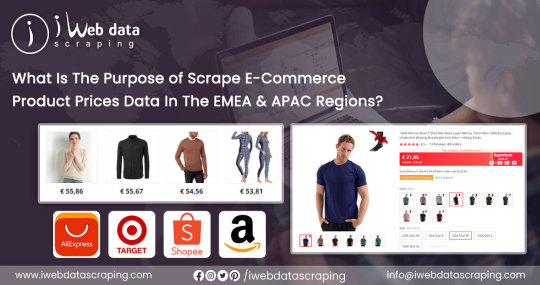
Data is essential for every business. Access to data over competitors can help an organization flourish and gain a competitive edge in the market. Businesses use this data to predict future demand, adjust their strategies, and find the industry's best practices. So, data analytics has become an essential requirement for online businesses. Similarly, when appropriately analyzed, the e-commerce world is full of invaluable data required to form a competitive advantage. It is the only way to find the effective means to get this data. E-commerce web data scraping is a well-known tool that enables in scraping of competitors' e-commerce websites and uses the data to boost conversions and outperform the business. The use of data scraping in eCommerce is unlimited. One can use it to perform an eCommerce audit by scraping data from competitors' websites and analyzing it to track their weaknesses and strengths. This data helps identify effective strategies to compete against the business.
Price Data Scraping in EMEA and APAC Regions
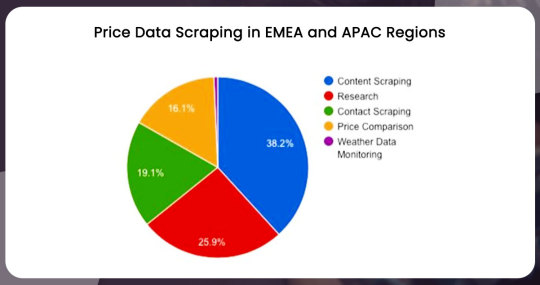
Price scraping is a common phenomenon used by eCommerce companies to drive more sales and stay competitive. Europe, the Middle East, and Africa, abbreviated as EMEA and Asia Pacific, APAC regions, are no wonder known to be great players in the eCommerce business. The rising volume of unstructured data in several end-use companies is critical for the rising demand for eCommerce price scraper. Several retail and eCommerce companies are looking for a method of price data scraping to enhance their business outcomes and enable intelligent decision-making.
With the continuous rise in demand for ecommerce web prices data collection services, Europe predicts to grow at a CAGR of 13.1%. Middle East regions expect to have the largest market size as the number of companies using price scraping tools is highest in the country. Another fastest market-expanding region is Asia Pacific. As the eCommerce industry is booming in this region, the importance of data collection is significantly growing to drive business growth.
Price Scraping Process for EMEA and APAC Regions
Price scraping for eCommerce & retail involves collecting product price information from an eCommerce website Setting up custom web crawlers to extract the product data from several eCommerce platforms can help scrape price data for E-Commerce & Retail. The scraper extracts essential price data for competitor intelligence activity and price benchmarking. The number of competitors for crawling is evaluated based on market and close competitors. After setting the web crawler, the data extracted, includes a brand name, site name, product name, and price. This data is then passed through a normalization system to prepare it for matching. This process is crucial to clean the data, as it contains symbols, memorable characters, and numbers that aren't useful.
List of Data Fields
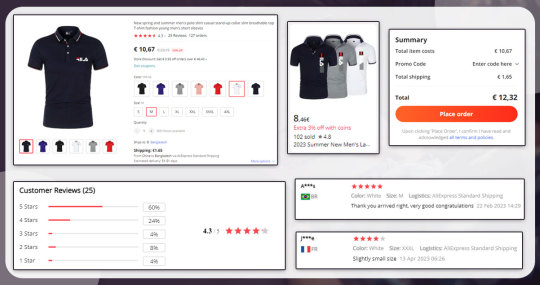
Major data fields available from Ecommerce websites are as follows:
Product Name
Description
Product Variants
Shipping Information
Product Reviews
Brand Manufacturer
Ratings
Offered Price
List price
Discounts and Deals
Challenges of Price Scraping
The steps to scrape product Prices from any eCommerce website aren't as easy as they are. There are several challenges associated with the process:
Variation in Products: Every product varies based on colors, sizes, and other aspects. These product variations sell at different prices. So, with one product having many variations, it becomes challenging to scrape multiple prices at a time.
Data Quality or Consistency: A scraper should show real-time data and actual product price. But, in some cases, for example, when we Scrape product Price Data for an item, the web scraper will show the price as $12,000. If the same site changes the price of the same product on the same day to $11,500, the scraper will show the new price, i.e., $11.500. Another big challenge is while entering the URL for scraping, apart from the original product, several other products also get visible in the suggestion. The scraper sees the prices of these products and needs clarification about which price to scrape.
Blocked While Scraping: Another major challenge is getting blocked while scraping. While trying to scrape the prices, several eCommerce sites want to keep their price private. And hence, they block the scraper.
Major Applications of E-Commerce Price Scraping
Several EMEA and APAC regions are benefitting from the eCommerce price scraping process. iWeb Data Scraping offers the best solution to scrape E-Commerce product prices data for EMEA & APAC regions. These data are helpful in several ways. The three major applications are:
Competitive Pricing: Price data scraping helps eCommerce companies to keep their pricing strategies updated and competitive.
Creating a Price Comparison Site: For almost all eCommerce shoppers, price comparison sites are the go-to destinations before purchasing online. Price data extraction is essential for building a powerful price comparison site.
Research and Analytics: Data scraped from the eCommerce sites helps derive insights on market niches, including demand, pricing, and availability.
The Bottom Line: Thus, data scraping has become a powerful technique for collecting data. Using this technique and tools, eCommerce businesses in EMEA and APAC regions benefit tremendously from getting a competition overview and practices to drive profitable results.
For more information, get in touch with iWeb Data Scraping now! You can also reach us for all your price monitoring services and mobile data scraping requirements.
#Price scraping tools#scrape product Prices from any eCommerce website#ecommerce web prices data collection services#Scrape product Price Data#eCommerce Price Scraper
0 notes